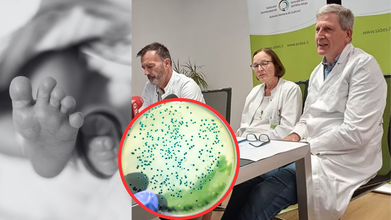- Health Conditions A-Z
- Health & Wellness
- Nutrition
- Fitness
- Health News
- Ayurveda
- Videos
- Medicine A-Z
- Parenting
- Web Stories
Bird Flu Outbreak: H5N1 Detected In US Dairy Cows And Poultry; How To Avoid Infection

As avian flu cases soar in US livestock, public health organizations call for urgent surveillance and prevention efforts to check the menace of a possible zoonotic pandemic. Highly pathogenic avian influenza H5N1 has continued to spread throughout the United States, infecting both poultry and cattle now. The U.S. Department of Agriculture (USDA) has reported more than 1,009 H5N1 detections in 17 states as of April 2025, including new cases in California and Idaho.
For the first time, the virus is sweeping American dairy cattle, a major departure from its normal avian hosts. New outbreaks have also been confirmed in live bird markets in New York and backyard poultry in New Mexico, showing the rapid spread of the virus in commercial and rural areas.
The crisis fuels worldwide alarm, with veterinarians and infectious disease specialists warning that unchecked transmission among mammals could raise the risk of human-to-human spread, potentially igniting a future pandemic.
From Birds to Cows—and Now Humans is There A Dangerous Mutation?
H5N1 has been widely circulating among wild birds for a long time, but the virus's leap to dairy cows in early 2024 was a watershed moment in zoonotic transmission. Infected states' cows showed symptoms like fever, decreased milk yield, coughing, drooling, and lethargy—puzzling symptoms later linked to avian flu.
The experts suspect that the virus is being transmitted through milking machines, especially auto-milkers, that can transfer traces of the virus from one cow to another. The disease has already infected dairy plant workers, with 70 cases reported in the United States, mostly among farmworkers. Most had mild illnesses, but a death did result in Louisiana in a patient who had some underlying conditions.
A total of all states except two reported H5N1 infection in cattle, poultry, or individuals between February 2024 and February 2025.
Delays in Response Is Alarming
Although the threat was serious, federal agencies have moved slowly, critics say. It took the USDA more than a month to require testing of cattle prior to interstate movement and ten months to launch a raw milk testing program. Even today, testing procedures continue to be irregular, with some states testing on a weekly basis and others participating hardly at all.
This delay has attracted ire from virologists and veterinarians who contend that early and forceful action might have contained the spread more effectively, given H5N1's established virulence and pandemic potential.
WHO New Global Surveillance Guidelines Issued
The World Health Organization (WHO) on April 11, 2025, released revised surveillance guidelines for the detection of human infections of H5 avian influenza viruses. These are intended to boost global readiness, facilitate early detection and response, and augment pandemic readiness.
Under WHO's new guidance, nations are required to inform the agency within 24 hours of the occurrence of any laboratory-confirmed human case of a new subtype of the virus. The guidelines also stress data openness and solicit greater surveillance activities, particularly in areas with heightened livestock-human interaction.
Locally, the Centers for Disease Control and Prevention (CDC) still rates the risk to the general population as low since human-to-human transmission has not yet been established. The CDC, however, observes that the virus is undergoing genetic evolution, which poses concern regarding potential mutations in the future that may alter its behavior.
In the meantime, the CDC has provided explicit PPE guidelines for farmworkers, such as respirators and eye protection, to avoid airborne and droplet transmission. The agency is also increasing testing, although difficulties remain due to the large percentage of undocumented farmworkers who will avoid testing for fear of legal consequences.
Is the Food Supply Safe?
Even with the commonality of H5N1 among poultry and cattle, there are no reported infections from the American food supply. The CDC still recommends basic food safety practices to reduce any risk that may exist:
- Cook chicken and eggs to 165°F (73.9°C)
- Ground beef must be cooked to 160°F (71.1°C)
- Whole beef cuts need to be cooked to 145°F (62.8°C)
- Raw milk and milk products that contain it, like unpasteurized cheese or yogurt, are highly not recommended due to their danger not only for bird flu but for other foodborne pathogens, like Listeria.
Is There a Bird Flu Vaccine?
No FDA-approved H5N1 vaccine exists for humans, though five candidate virus strains have been produced for possible use. The U.S. government has purchased 4.8 million doses of an experimental vaccine in preparation for a future outbreak with ongoing human-to-human transmission.
Internationally, Sinergium Biotech in Argentina, in partnership with the WHO, is developing an mRNA-based H5N1 vaccine, based on the successful platform utilized for COVID-19 vaccines. This effort will provide equitable access to low- and middle-income countries, where infrastructure for pandemic preparedness may not be present.
In poultry, although vaccines do exist, they are not commonly used in the U.S. because of export bans by trading partners that refuse to accept imported vaccinated birds.
How to Avoid Bird Flu?
For the general public, the most effective defense against H5N1 is still preventive action. This includes:
- Avoiding contact with ill or dead animals
- Reporting unusual wildlife or livestock deaths to local authorities
- Practicing safe food handling
- Avoiding eating raw or unpasteurized dairy products
Healthcare professionals emphasize the importance of public awareness, early reporting, and responsible food handling as essential measures to prevent broader transmission.
Nasal Spray That 'Works In Hours' May Replace Pills For Depression Treatment

Credits: Canva
A breakthrough study finds esketamine nasal spray may deliver meaningful improvement for treatment-resistant depression within hours. For decades, patients struggling with major depressive disorder (MDD) have had to wait weeks sometimes months for antidepressant medications to show effects. For roughly one in three people, even after trying multiple drugs, relief never comes. This group, known as treatment-resistant depression (TRD), faces limited and often frustrating options.
Now, a new clinical trial suggests there may be another path, esketamine nasal spray. Researchers report that when used as a standalone treatment, esketamine provided rapid and sustained relief for adults with TRD. Unlike traditional antidepressants that take weeks to work, improvements appeared within 24 hours and lasted throughout the study’s four-week duration. The findings were published in JAMA Psychiatry.
Ketamine, a compound first approved in the 1970s as an anesthetic, has drawn increasing attention for its antidepressant effects at lower doses. Esketamine, a chemically refined version, works on similar pathways but is more targeted.
In 2019, the U.S. Food and Drug Administration approved SPRAVATO, an esketamine nasal spray, for use alongside oral antidepressants in TRD. Until now, it was unclear whether the spray could stand on its own. This new phase 4 trial offers the strongest evidence yet that esketamine may be effective without an added oral drug.
The study enrolled 378 adults across 51 U.S. outpatient centers between 2020 and 2024. To qualify, participants had to show a history of poor response—defined as less than 25% improvement—to at least two antidepressants during their current depressive episode.
Key features of the trial included:
Design: randomized, double-blind, placebo-controlled
Groups: fixed doses of either 56 mg or 84 mg esketamine, or a placebo spray
Treatment schedule: twice-weekly dosing for four weeks
Primary measure: changes in Montgomery-Åsberg Depression Rating Scale (MADRS) scores, which capture depression severity
Most participants were women (61%), and the average age was 45. All entered the study with moderate-to-severe depression.
How Esketamine Nasal Spray Works?
Within a single day of treatment, both esketamine groups reported noticeable improvements compared to placebo. By day 28, those on 56 mg showed a 5.1-point greater reduction in symptom scores versus placebo.
The 84 mg group had an even stronger effect, with a 6.8-point advantage. For perspective, traditional antidepressants often take six to eight weeks to yield measurable changes. Esketamine’s speed is one of the factors making it so promising for TRD patients, many of whom live with intense, persistent distress.
Patients who continued into the optional 12-week open-label phase—where all participants received esketamine—maintained or further improved their scores. This suggests the drug’s benefits may extend beyond the initial four weeks.
The “number needed to treat,” a measure of clinical significance, was around 6–7 for symptom response. This means that for every six or seven patients treated, at least one more experienced a meaningful reduction in depression compared to placebo. For a psychiatric intervention, that is a robust effect size.
Are There Any Side Effects of the Nasal Spray?
Like other ketamine-based therapies, esketamine is not without side effects. In this trial, the most common were nausea, dizziness, headache, and dissociation, a temporary feeling of detachment from one’s surroundings.
Importantly, these effects were short-lived, generally resolving within hours of dosing. Safety monitoring also showed no increase in suicidal thinking compared to placebo, an encouraging finding in depression research. No treatment-related deaths were reported.
Still, the psychoactive nature of the drug meant some participants could guess whether they had received esketamine or placebo, a limitation that researchers acknowledged.
For the estimated 280 million people worldwide living with major depressive disorder, and especially the one-third who don’t respond to conventional drugs, esketamine represents a potential paradigm shift.
Traditional antidepressants work by altering serotonin, norepinephrine, or dopamine. Esketamine instead targets the glutamate system, offering a novel mechanism of action. That difference matters- before SPRAVATO, psychiatry hadn’t seen a new treatment pathway in over 30 years.
Adam Janik, medical director at Johnson & Johnson and lead author of the study, emphasized the scale of the problem: “The size and scope of the global depression epidemic is staggering. Significant unmet needs remain for these patients.”
While the findings are promising, experts caution against premature conclusions. The trial population was not racially diverse, and individuals with certain psychiatric conditions were excluded. That raises questions about how well the results will apply across broader patient groups.
For decades, patients with treatment-resistant depression have cycled through medications, therapies, and hospitalizations, often with little relief. This study adds weight to a growing body of evidence that esketamine could break that cycle. While it is not a cure, the possibility of meaningful relief within hours rather than weeks could be life-changing for millions.
Two Premature Infants Die From Infection In Italy Hospital Over Suspected Soap Dish Contamination

Credits: Canva/ South Tyrolean Health Service
Two of the premature infants, each weighing under two pounds, succumbed within days of one another at San Maurizio Hospital in Bolzano, Italy. The probable cause: Serratia marcescens, a bacterium traced to detergent dispensers used to wash baby bottles and teats in the neonatal intensive care unit (NICU).
The two premature infants, born at 23 and 27 weeks of gestation, died from overwhelming sepsis on August 12 and 13. Both deaths have raised serious questions about the hospital's infection control and hygiene practices, as well as the exceptional vulnerability of premature infants.
Italy's National Anti-Corruption and Prevention Agency (NAS) is spearheading the investigation into how a kitchen staple—dishwashing detergent—was used as a lethal vector. Preliminary tests isolated Serratia marcescens in the spout and dispensers utilized for the soap reservoir in the NICU. Authorities are investigating several alternatives:
- The detergent could have been contaminated during transport to the hospital.
- Improper storage or handling could have provided an environment for bacteria to flourish.
- An infected person may have transferred the pathogen through contact with the dispenser.
The route of contamination is uncertain until laboratory tests are done.
What Is Serratia marcescens?
Serratia marcescens is no stranger to hospitals. The bacteria exist best in damp surroundings—sinks, soap dispensers, catheters—and though usually harmless to healthy patients, are deadly to those with weakened immune systems. For preemies, whose immune systems are still developing, contact can rapidly degenerate into sepsis, pneumonia, or meningitis.
Hospital administrator Pierpaolo Bertoli emphasized that the germ itself was not novel. "The bacterium's presence is not singular because it is always a threat to neonatal intensive care units," he stated. The threat, he continued, is in the immense vulnerability of NICU patients.
Immediate Response and Precautionary Measures
After the discovery, a recall of all soap from the Bolzano hospital system was ordered, and admission of no more high-risk premature infants is taking place until notice. Existing cases are being routed to hospitals in Trento, about 40 miles away.
The hospital has even transferred the 10 remaining NICU babies to a different wing as a precautionary step. The hospital's medical director, Dr. Monika Zaebisch, confirmed that proper hygiene procedures were in effect but accepted the tragedy. "Unfortunately, these two cases could not be prevented," she stated.
Why Premature Babies Are Susceptible To Deadly Infections
Prematurity, or delivery prior to 37 weeks, leaves babies with a poorly developed immune system. Under normal circumstances, transfer of protective antibodies from the mother through the placenta in the third trimester supplies babies with at least partial immunity at birth. In preemies, that all-important exchange is incomplete—or nonexistent.
This absence of maternal immunity, coupled with medical interventions like catheters, ventilators, and feeding tubes, provides an entry point for bacteria such as Serratia marcescens. Infections that would be contained within older children or adults—such as bloodstream infections, pneumonia, or meningitis—can develop quickly and be life-threatening in preterm infants.
The Bolzano tragedy is no lone wolf. Hospitals around the globe have experienced outbreaks attributed to contaminated medical devices, water supply lines, and cleaning solutions. Even slight breaches of sterilization procedures can snowball into fatal infections in vulnerable wards such as NICUs.
Dr. Josef Widmann, director of medicine for the South Tyrolean Health Authority, recognized the systemwide problem. "This is not merely one product issue," he told a press briefing. "It is a reminder that NICUs remain under constant risk of microbial exposure.
The incident comes on the heels of another Italian public health crisis: a botulism outbreak from a food vendor in southwest Italy that resulted in two deaths and sent 14 to the hospital. Combined, the incidents highlighted systemic weaknesses in food and health safety regulation.
The Public Prosecutor of Bolzano is contemplating autopsies on the infants, which would determine whether charges of malpractice were appropriate. Relatives and health advocates are demanding answers, both to pay respects to those who died and to guarantee system change.
In the meantime, NAS researchers persist in testing the recalled detergent, dispenser units, and environmental swabs from the NICU. Identification of where the contamination took place, at the production facility, in storage, or within the hospital system itself, is important not only for legal accountability but also for avoiding future such outbreaks.
World’s First Pregnancy Robots: Will Women Soon Be Able to Use Surrogate Robots?

(Credit - Heathandme)
While technology has long assisted in the birthing process, researchers at Kaiwa Technology, China are now taking it a step further by creating artificial wombs that can be placed inside a robot. According to Dr Zhang Qifeng, who is leading the project, the technology for artificial wombs is already significantly advanced, and the team aims to demonstrate a working prototype as early as next year.
The robot is expected to ‘become’ pregnant and carry a baby to full term in an environment filled with artificial amniotic fluid, designed to mimic the natural conditions of a human womb. Although the exact process of fertilization has not yet been disclosed, the project is being described as a potential game-changer for people who cannot conceive naturally or are unable to carry a pregnancy to term.
Ethical Concerns And Unanswered Questions
As with any radical new technology, the robot womb comes with serious ethical and legal questions. How will the egg and sperm be fertilized? What does the birthing process look like? And who will be legally responsible for the baby? Dr Qifeng says discussions with Chinese officials are already underway to create new regulations for this emerging field.
One of the biggest draws as per the company is its cost. The estimated price of using the robot for surrogacy could be around $14,000, a fraction of the $100,000–$200,000 typically spent in the U.S. for human surrogacy.
New Era Of Reproduction Or Dystopian Step?
The news has sparked a heated debate. Supporters believe the technology could offer new hope to infertile couples and free women from the physical risks of pregnancy. Some even see it as a potential solution to China’s growing infertility crisis.
Critics believe that the biological and emotional complexity of human pregnancy cannot be replicated by a machine. Experts fear that growing a baby in a completely artificial environment could have unknown effects on the child’s health and well-being, and that removing the maternal bond from the process might lead to ethical dilemmas.
© 2024 Bennett, Coleman & Company Limited

